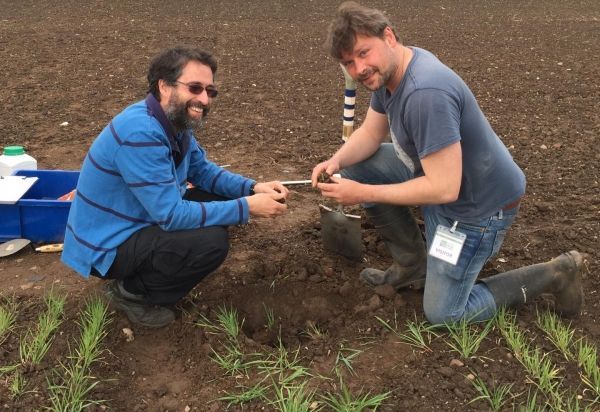As the growing season progresses, you might not notice much about what’s happening to plants under the soil. Most of us pay attention to new shoots, stems, leaves, and eventually the flowers and crop we intend to grow. We might think of roots as necessary, but uninteresting, parts of the crop production process.
Paul Hallett and his team disagree. They focus on what’s going on in the soil with the plant’s roots.
The zone of soil that surrounds a plant’s roots is called the rhizosphere. It’s the combination of the Latin words for “root” and “area.” And it’s a busy location for important–but hidden–crop production processes.
In the rhizosphere, plants make a variety of chemical compounds called exudates. Hallett and fellow researchers at the University of Aberdeen look at the effects that exudates have on the plant and surrounding soil community. Their unique work takes small-scale measurements near the surface of the roots. The properties here can be very different from the rest of the soil.
Read more at American Society of Agronomy
Image: Researchers Glyn Bengough and Nico Koebernick sampling a field experiment planted with barley that has different root hair properties: (i) parent wildtype, (ii) no root hairs, (iii) short root hairs, (iv) long root hairs and (v) a commercial variety with a very fibrous and hairy root system. Intact samples are being collected for XRay CT imaging so that the effect of root hairs on soil pore structure can be explored. (Credit: Paul Hallett)


